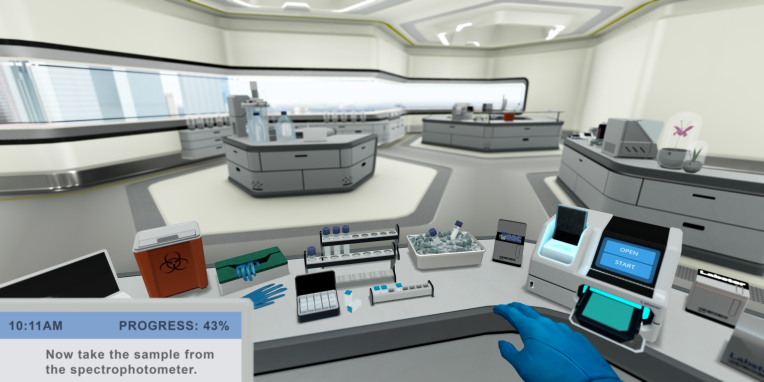Labster, the Denmark-headquartered startup building virtual laboratory simulations for STEM students, has raised $21 million in Series B funding.
Leading the round is Owl Ventures, with participation from Balderton Capital, Northzone and Swisscom Ventures. Previous backers Nordic Makers, David Helgason, EduCapital and Entangled Group also followed on, bringing the total raised by the company to date to $35 million.
Launched back in 2013, Labster provides interactive laboratory simulations powered by VR for students that wish to explore lab experiments in biology, chemistry, physics, engineering and general sciences. It offers 70 virtual labs with the aim of increasing participation in STEM curricula, while also improving learning outcomes and retention rates.
“STEM-related careers are increasingly becoming both more in demand and also more important than ever before,” says Labster co-founder Michael Bodekaer. “However, most students will never have access to expensive, high-tech labs, or have enough time in the lab to learn critical skills they’ll need.”
Specifically, Labster’s fully interactive virtual lab simulations are designed to engage and stimulate a student’s natural curiosity as they learn. The idea is to provide an environment where they can experiment with and explore different lab scenarios — and at less cost than brick ‘n’ mortar labs.
“We aim to provide modern science learning that is cost and time-effective,” says Bodekaer.
More than 150 universities and high schools around the world used Labster’s virtual labs in 2018, a quadrupling of annual growth that put the software in the hands of more than 200,000 students worldwide. Those educational institutions include Harvard, MIT, Stanford, Exeter University and ETH Zurich. Labster has also developed partnerships with industry leaders in technology and education, such as Google and Arizona State University, Lenovo, Pearson and Springer.
Meanwhile, this latest round will be used to accelerate the expansion of Labster’s STEM content catalog and development of new lab simulations. The funding will also enable the company to continue to scale its U.S. operations, including customer support and sales.
“Our main competitor is the status quo, i.e. institutions hesitant to adopt new technology even though it’s been proven that virtual labs increase student engagement and achievement,” adds Bodekaer. “There can be several reasons why they are hesitant, but the most common one we see is educators not feeling like they have the time or knowledge to implement virtual labs into their teaching. That’s why we are continuously working on our training and on-boarding to help educators get started with virtual labs. Our goal is for educators to feel like we are holding their hand every step of the way, and fortunately the feedback we are getting indicates that we are doing a pretty good job of that.”
To that end, Labster is sold as a subscription service to universities and high schools. The edtech company offers two subscription price models: institution accounts and individual student accounts.










